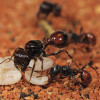2021 Nobel Prize in Physiology or Medicine
The 2021 Nobel Prizes have been announced so we’re going to visit each in turn, and here’s Sally Le Page with a spicy story to kick things off…
Sally - The Nobel Prize in Physiology or Medicine this year goes to... curry. Well, okay, not quite, but it does recognise the discovery of the science that explains why a vindaloo sets your mouth alight.
This is down to how the nervous system decodes and transmits information about temperature, pain and touch, which is what winners David Julius and Ardem Patapoutian have spent their careers trying to figure out.
When we run our fingers over a rough surface, delve into our pockets to find a key or a coin, or dip a tentative toe in the water at the beach to tell how warm it is, specialised structures called "receptors" on nerve endings in the skin respond by firing off barrages of electrical impulses to tell the brain what's going on.
The challenge was to discover the identity of those receptors and, ultimately, how they work. If we can do that, and find the genes that the body uses to produce and control them, then we can potentially unlock new ways to treat conditions like chronic and acute pain, and the sensory loss that accompanies diseases like diabetes.
David Julius turned to chilli peppers to help him on this quest. These contain the spicy chemical capsaicin. When we eat this, it activates a family of nerve cells that respond to changes in temperature, fooling our mouths into thinking they are much hotter than they are so we experience a burning sensation.
By painstakingly adding genes one by one to cultured laboratory cells, David Julius eventually found the one that made his cells light up in the presence of capsaicin and, interestingly, the venoms of some spiders, explaining why spider bites often burn too. He then used the same trick to find the structures that respond to menthol and make your mouth feel cold when you suck a mint.
Ardem Patapoutian also independently found this menthol factor and at the same time discovered how nerve cells respond to touch. Like David Julius, he added genes one by one to cultured cells. Eventually he stumbled on a pair of genes, which he named Piezo1 and Piezo2, that made his cells produce bursts of electricity when he prodded them with a small pipette. They turned out to play a crucial role in how our bodies detect the positions of our joints.
So next time you reach for the spice jar, thank Ardem Patapoutian and David Julius for explaining how we know we're making those movements and how we appreciate the taste of the results...










Comments
Add a comment